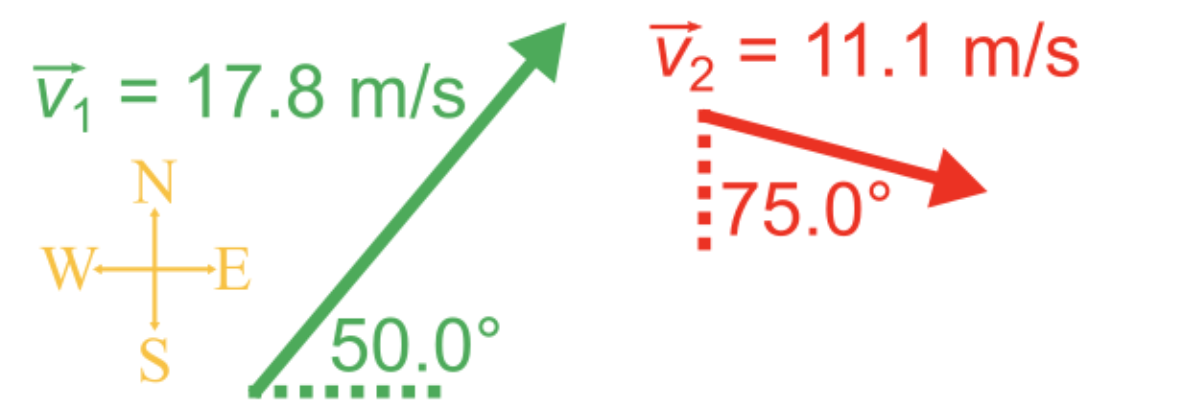In this lesson, we will learn:
- What are x and y components?
- How to break a vector into its components
- Problem solving with vector components
Notes:
-
Components of a vector are other vectors that add up tip-to-tail give you the original vector.
- The x and y components of a vector are the components that are pointed directly in the x and y directions, respectively, and are useful for solving problems.
- The x and y components can be found with trigonometry, since they always form a right triangle with the original vector.
(Pythagorean theorem)
: angle, in degrees (°)
: side opposite angle
: side adjacent angle
: hypotenuse of triangle (longest side, side opposite 90° angle)
and : non-hypotenuse sides of triangle
: hypotenuse of triangle







